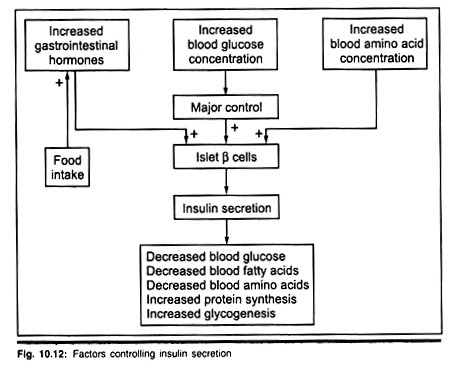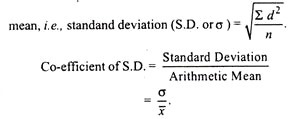The leaf is a flattened, lateral outgrowth arising from the node of the stem or the branch. It is generally green in colour.
It usually has a bud in its axil. Owing to the presence of chlorophyll, the leaves are the main organ of the plants responsible for photosynthesis.
Leaves initiate from the shoot meristem and gradually enlarge as they grow older.
Parts of a Leaf:
A leaf generally consists of three parts, namely parts- Leaf base, Petiole and Lamina.
1. Leaf base:
Part of the leaf attached to the stem is called leaf base. In many monocots, the leaf base expands into a sheath that partially or wholly encircles the stem. In some dicot plants the leaf base bears lateral appendages called stipules. Stipules vary in form and size and may be modified into leaf, thorns, tendrils and scales. In some plants, the leaf base is swollen and is termed as Pulvinus.
2. Petiole:
The stalk of the leaf is called as the petiole. Leaves with petioles are known as petiolate and those without it are called sessile.
3. Lamina:
The broad flat part of the leaf is the lamina. It has a thick mid rib in the centre, on the both sides of which thin veins branch -out that divides further forming network of veinlets. The lamina is the most important part of the leaf since food material is prepared here in it.
Veins contain the vascular tissue and act as channel for the transport of food, water and minerals. These veins also function as skeleton of lamina. The arrangement and distribution of veins and veinlets in the leaf lamina is called venation. There are two main types of venation: Reticulate and Parallel. In reticulate venation the veins are irregularly distributed to form a network. It is a characteristic feature of the dicotyledons. Parallel venation is characteristics of monocot plants. In this type, the veins are parallel and do not form a network.
Types of leaves:
There are two types of leaves:
1. Simple and
2. Compound
Simple leaf consists of a single blade which may be entire or incised, while in compound leaves incision reach the mid-rib or its base, the lamina is completely divided up into a number of smaller segments; each segment is called a leaflet; and the entire leaf is called as compound leaf and the stalk to which the leaflet are attached is known as the rachis (Fig. 4.11).
Phyllotaxy:
The leaves on the stem are arranged in such a way that they receive maximum sunlight to perform the function of photosynthesis. The arrangement of leaves on a stem or branch is called phyllotaxy.
Three types of phyllotaxy are commonly found in plants:
(i) Alternate:
In this arrangement, one leaf arises from each nodes, thus leaves alternate with each other at successive node.
(ii) Opposite:
In this two leaves arise at each node in opposite direction.
(iii) Whorled:
In this three or more leaves arise in a whorl at one mode.
Functions of Leaf:
Primary functions of leaves:
1. Photosynthesis:
The principal function of the leaves is to manufacture organic food. The site of photosynthesis are the green cells of leaf having chlorophyll.
2. Transpiration:
The loss of water from leaf surface is known as transpiration. It is necessary to create force or tension in water column and thus cause ascent of sap.
3. Gaseous exchange:
It takes place in leaves through stomata during the process of photosynthesis and respiration.
Secondary functions of leaves:
1. Storage of food in leaf bases
2. Water is stored in the leaves of succulent nature
3. Protect the plants from grazing animals when modified into spines
4. It reduces the rate of transpiration when changed into Phyllode
5. Leaves help the plants in vegetative multiplication
6. The leaves are modified into sepals, petals, stamens and carpels to take part in sexual reproduction.
Modifications of Leaf:
Leave of some plants modify themselves to perform specialized function other than photosynthesis. (Fig. 4.12 i- vi)
(i) Leaf tendril:
Leaves are modified into thread-like green structures known as tendril which coil round the neighbouring object and help the plant to climb, e.g. Lathyrus, Pisum. They can be differentiated from stem tendrils by the absence of scaly leaves over them and being un-branched.
(ii) Leaf spines:
Entire leaf or a part of it is modified into spines. Spines reduce the rate of transpiration and protect the plant from grazing animals, e.g. Opuntia.
(iii) Scale leaves:
The leaves are modified to store food either in the scale leaves or at the basal portion of the ordinary leaves, e.g. Onion.
(iv) Phyllode:
Petiole of the leaf is modified to perform the function of photosynthesis. The petiole gets flattened into lamina like structure and known as phyllode. e.g. Australian acacia.
(v) Pitcher:
In some plants, the leaf becomes modified into pitcher. The function of the pitcher is to capture and digest insects e.g. Nepenthes. In Nepenthes or pitcher plant pitchers are held vertically by a tendril-like, slender coiled stalk, petiole. The lid of pitcher represents the modified leaf apex. Leaf lamina is modified into pitcher. The flattened basal portion is the leaf base.
(vi) Bladder:
In some plants, the leaves get modified to from bladder-like structures for trapping the insects and digesting them. The leaves in such plants are segmented, and some of these segments form the bladder, e.g. Utricularia.
Anatomy of leaves:
A thin section of leaf when examined under microscope reveals the internal structure of leaf.
Internal Structure of Dicot Leaf (Fig. 4.13. i)
1. Epidermis:
It is present on the upper and lower surface of the leaves. The epidermis consists of a single layer of parenchymatous cells. A layer of thick cuticle is present on the upper surface of leaves, while lower epidermis has a thin cuticle. A large number of stomata are distributed on lower epidermis. The stomata help in gaseous exchange and also help in evaporation of excess water from the leaf Epidermis protects the internal tissues from injury and infection.
2. Mesophyll:
The tissue found in between the upper and lower epidermis is termed as mesophyll tissues. These tissues are also known as photosynthetic tissue due to presence of chloroplast. Mesophyll tissue is differentiated into palisade parenchyma and spongy parenchyma.
Palisade parenchyma:
It is present just below the upper epidermis and consists of one or two layers of closely packed elongated cells. Palisade tissues contain a large number of chloroplasts. Photosynthesis takes place in these tissues.
Spongy parenchyma:
It is present below palisade tissue. It consists of spherical, oval or irregular and thin-walled parenchyma cells. These cells are loosely packed and have intercellular spaces and air cavities. These cells contain few chloroplasts. Spongy parenchyma helps in exchange of gases and water vapours through the intercellular spaces and air cavities. They also contribute in photosynthesis to some extent.
3. Vascular system:
Each vascular bundle consists of xylem and phloem. Xylem lies towards the upper epidermis and consists of tracheid’s, vessels, xylem parenchyma and xylem fibres. Phloem lies towards the lower epidermis and consists of sieve-tubes, companion cells and phloem parenchyma. Xylem helps in conduction and distribution of water and mineral salts to the leaf. Phloem translocates manufactured food from leaf to the storage organs and all other parts of the plant. Each vascular bundle is surrounded by a thin layer of cells called as bundle sheath.
Internal Structure of Monocot Leaf (Fig. 4.13 ii)
1. Epidermis:
There is no difference in the upper and lower epidermis. Stomata are dumbbell shaped and occur on both the surfaces. In upper epidermis, few cells are larger in size called bulliform cells or motor cells. These cells have large vacuoles containing water. These cells help in unrolling of the leaf during its development and opening and closing of stomata.
2. Mesophyll:
The mesophyll is not differentiated into palisade and spongy parenchyma, but is composed of rather compactly arranged isodiametric cells. The mesophyll cells contain abundant chloroplasts to carry out photosynthesis.
3. Vascular Bundles:
Each vascular bundles consists of xylem towards the upper surface and phloem towards the lower surface. Vascular bundles are surrounded by a bundle sheath. The cells of bundle sheath contain chloroplasts. The sclerenchymatous patches are found at both ends of large vascular bundles to provide mechanical strength.



